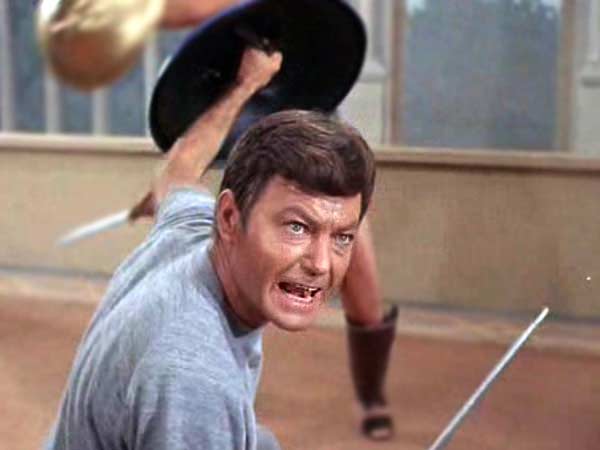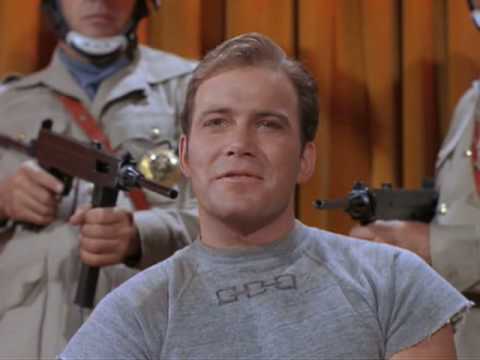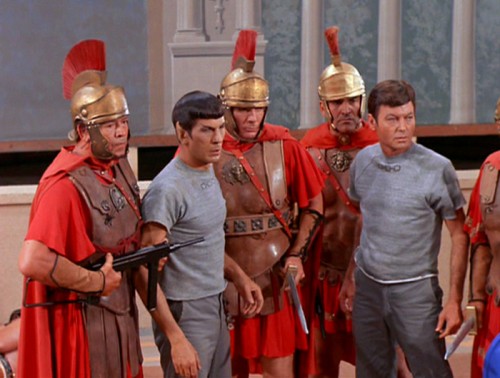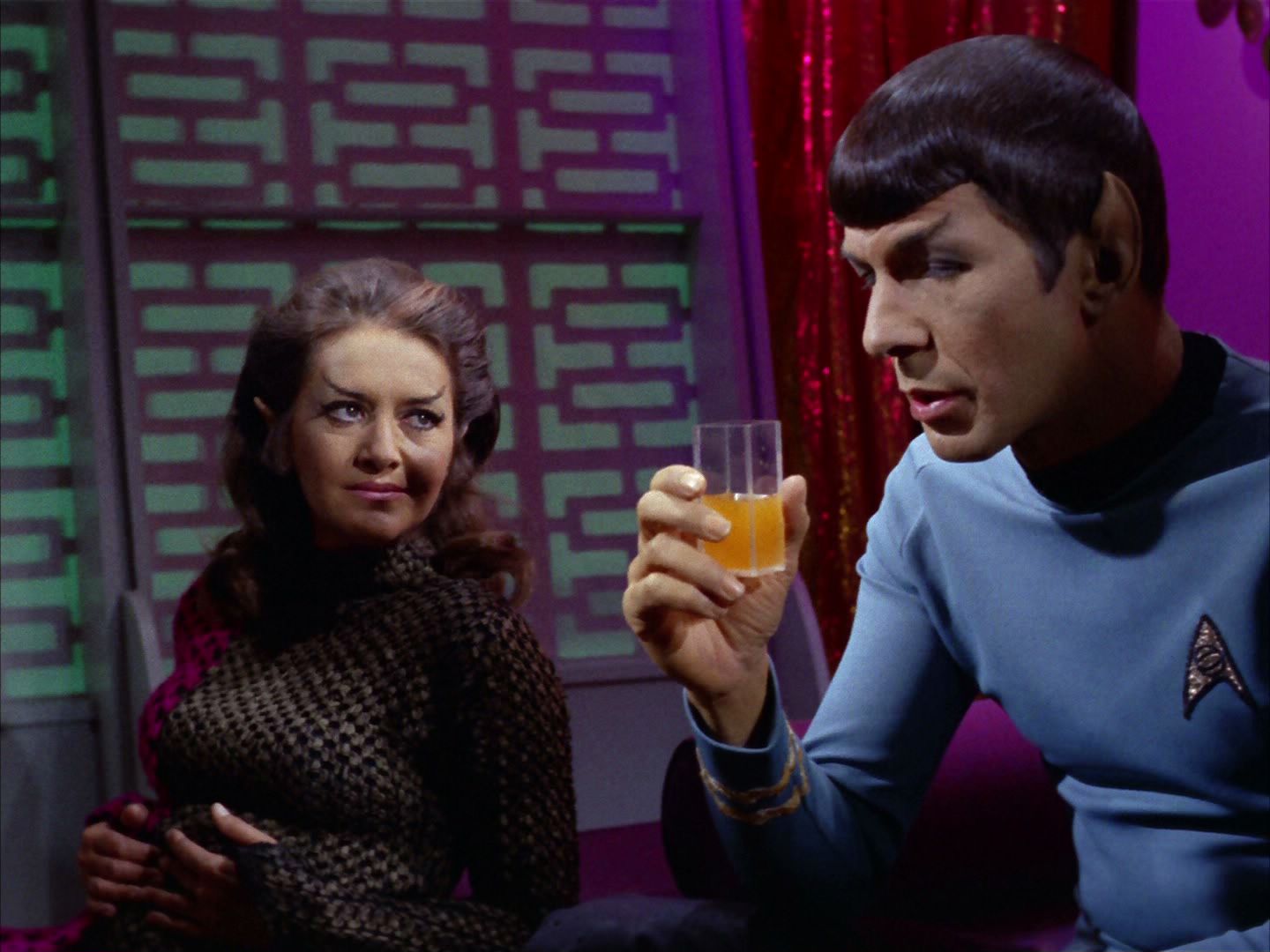
Kirk apparently goes all rogue and takes the Enterprise into Romulan territory without authorization. The Enterprise is quickly surrounded by Romulan ships that have Klingon design and sport new and improved cloaking devices that render ships invisible and (for the first time) hidden from tracking sensors. Kirk and Spock beam over to one of the Romulan ships to face the music and Spock reveals that Kirk has gone nuts and then apparently kills Kirk in a struggle. But it’s all a ploy to get a cloaking device and neutralize the new Romulan threat, and Kirk (alive and well) poses as a Romulan and steals the cloaking device while Spock distracts the Romulan commander (Joanne Linville) by (ahem) throwing her a few curves. The Enterprise barely escapes after Scotty incorporates the cloak on the Enterprise. With the cloaking device in hand, the Federation will be able to negate any new advantage and keep the status quo between the two superpowers.
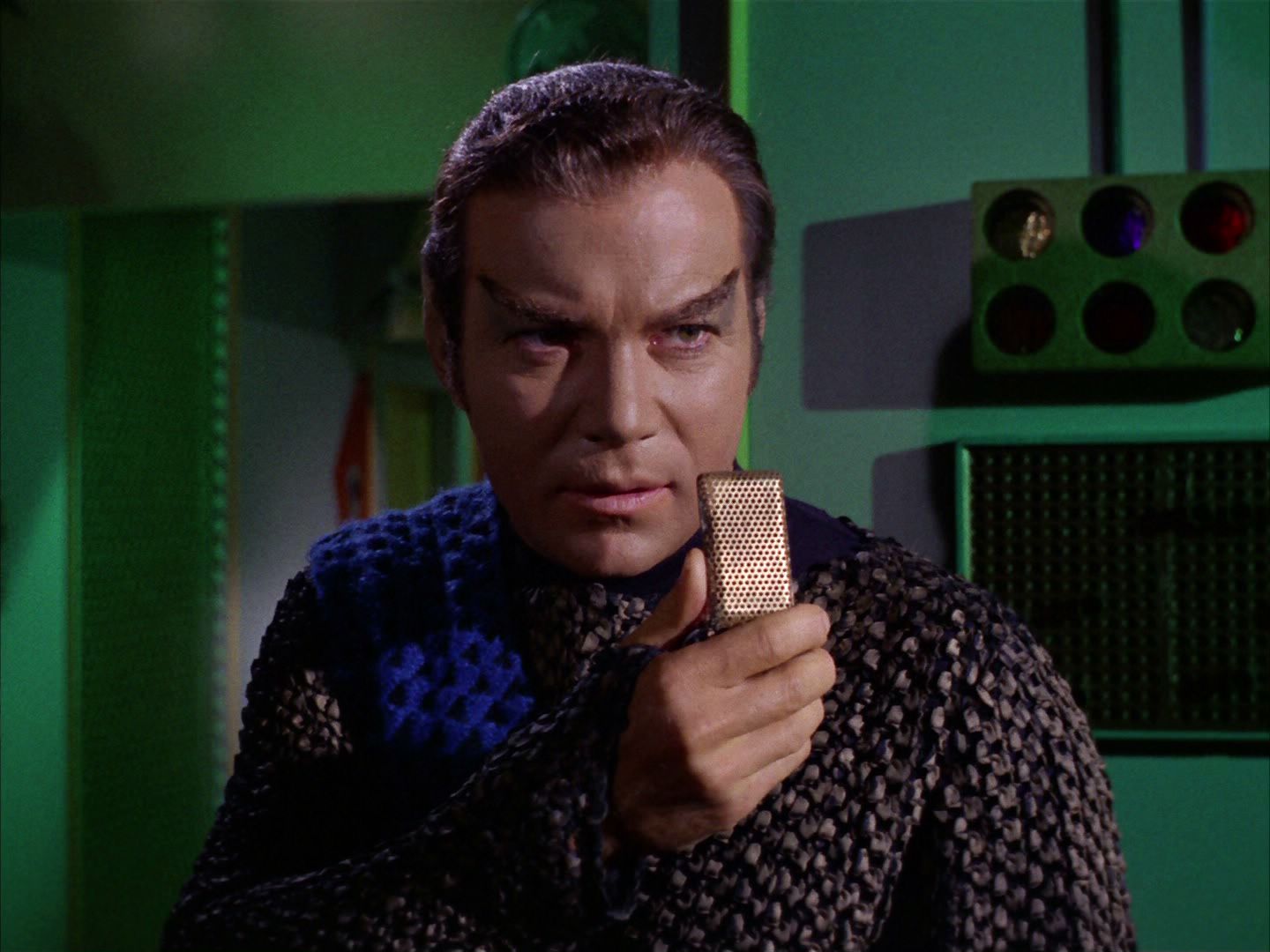
Why it’s important
It’s the first time since “Balance of Terror” where the Romulans are more than baddies taking potshots at the Enterprise (or, if you prefer, more than Voyager-style aliens of the week). We learn a lot more about the Romulans and how they’re like and unlike Vulcans. The dialog between Kirk and the Romulan commander is important in explaining the relationship between the two enemies and how the galaxy works in the 23rd century. We learn about steps that could and would be taken after territorial incursions — and just how tense the situation is.
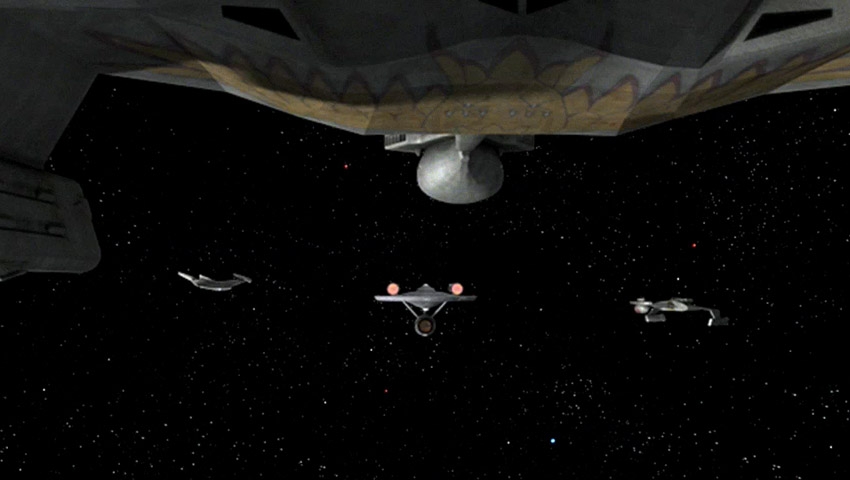
What doesn’t hold up
Well, the conceit that Romulans use Klingon design for their vessels is pretty rich. It’s so hurriedly explained that it clearly wasn’t anything the creators wanted to get into — while the fact that the Bird of Prey first seen in “Balance of Terror” had no warp capabilities (and apparently a very small crew) could have something to do with the choice. Or the creators just really liked the new Klingon design, which was first seen in “Elaan of Troyius” and is pretty badass. There’s also a theory that the Bird of Prey model was lost or damaged, and the Klingon model reused for budgetary reasons. It’s actually kind of funny, because this episode was produced after but originally aired before “Elaan of Troyius,” meaning that the ship first debuted as a Romulan vessel, even though it was first built and filmed as a Klingon vessel.
As good as “The Enterprise Incident” is, one wonders if the Romulans wouldn’t be gearing for war after the events here. Granted, the Federation obtained knowledge of the new cloaking device, negating a tactical advantage. But the Enterprise clearly violated treaty — committing an act of war — and Kirk’s presence on the bridge at the end of the episode should have been enough evidence that Kirk didn’t go nuts/rogue. It would have called everything Spock said to push forward that con into question.
Is the thinking that the Romulans were ashamed that they’d been out-Romulanned, so they tipped their hats and walked away? Or is this just the first example of season three’s anything-goes approach — like the time Spock removes several days worth of memories to prevent Jimbo from having a sad, or the time Spock has brain surgery twice in a few days without any obvious impact on his hair?
Final thoughts
This is one of my favorite episodes of TOS, even acknowledging the logical gaffes. The scenes with Spock and the Romulan commander are, well, fascinating. The writing is taut and the look inside the Romulan ship is, mostly, well done — even if it’s obvious that the corridors from the Enterprise were reused with different lighting.
Apparently, the Romulans started using Klingon ship design because the two powers forged some sort of a pact, perhaps an alliance. It’s never mentioned explicitly, but the sharing of any technology is odd, given how much the Klingons and Romulans are shown to hate each other in TNG and DS9. Like other episodes, it opens a can of worms on when, exactly, the Romulans and the Klingons started hating each other and when the Klingons and Federation became allies. More on the weird love triangle between the Federation, Romulans and Klingons when we review TNG’s “Heart of Glory” and “The Neutral Zone” in a few months.
“The Enterprise Incident” also stands out because of all the really bad episodes that follow it in TOS’ infamous third season. And while Sulu, Chekov and Uhura are restricted to procedural scenes on the bridge, this episode is one of Trek’s better ensemble pieces. It’s worth noting that there really aren’t that many episodes where all seven of Kirk, Spock, McCoy, Scotty, Sulu, Uhura and Chekov appear — partly because Chekov doesn’t show up at all the in the first season and probably also due to budget reasons.
The creators made an interesting choice in the remastered version of this episode, making one of the three ships that surround the Enterprise a Bird of Prey from “Balance of Terror”, replacing a third Romulan/Klingon cruiser (as you can see in the photo above). It’s a nod to continuity and almost a wink to the idea that the creators in the ’60s used the Klingon ship model (which is much cooler looking than the Bird of Prey) here.

